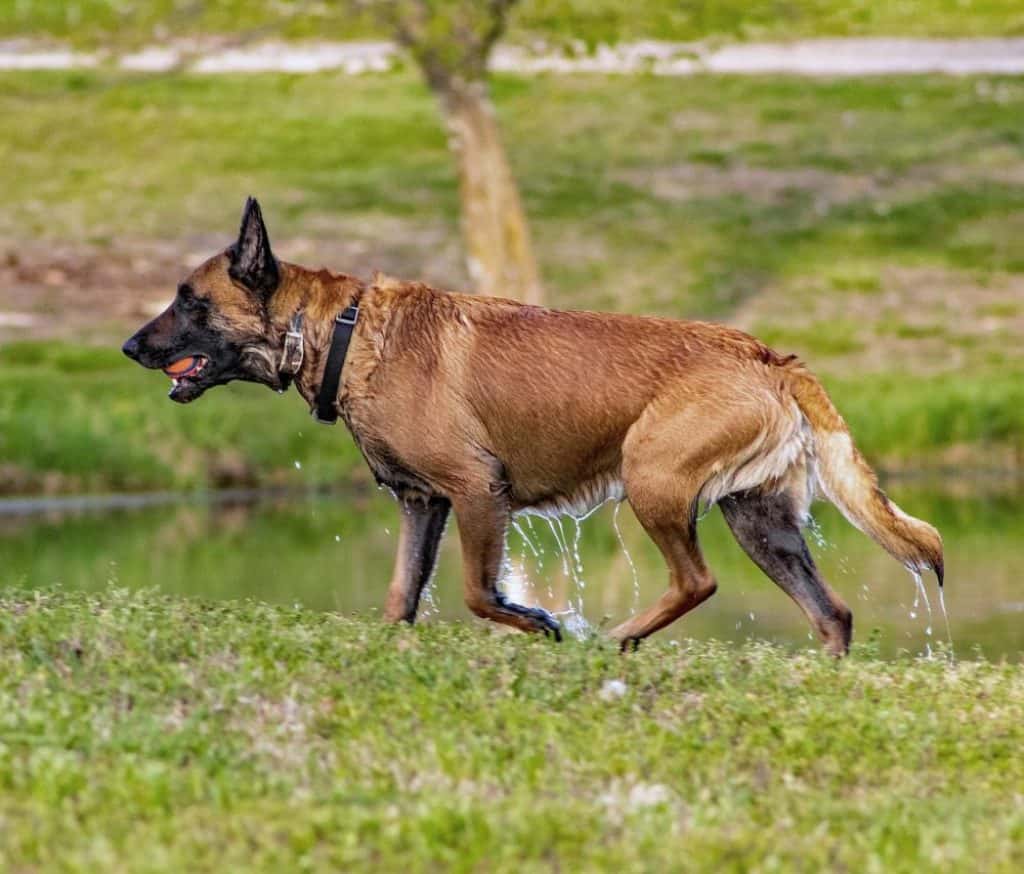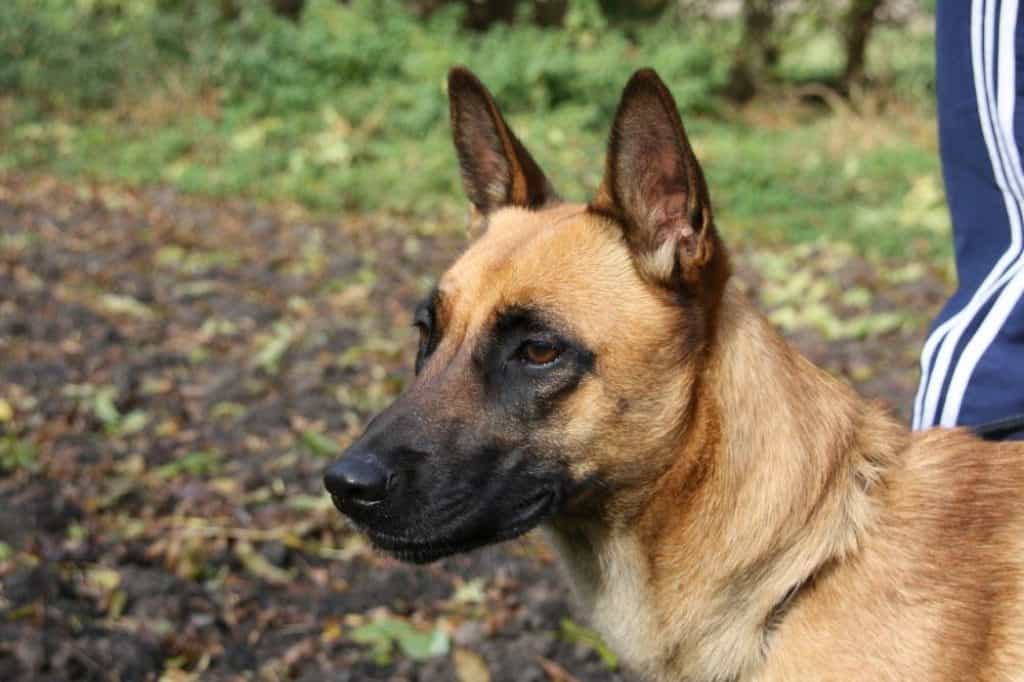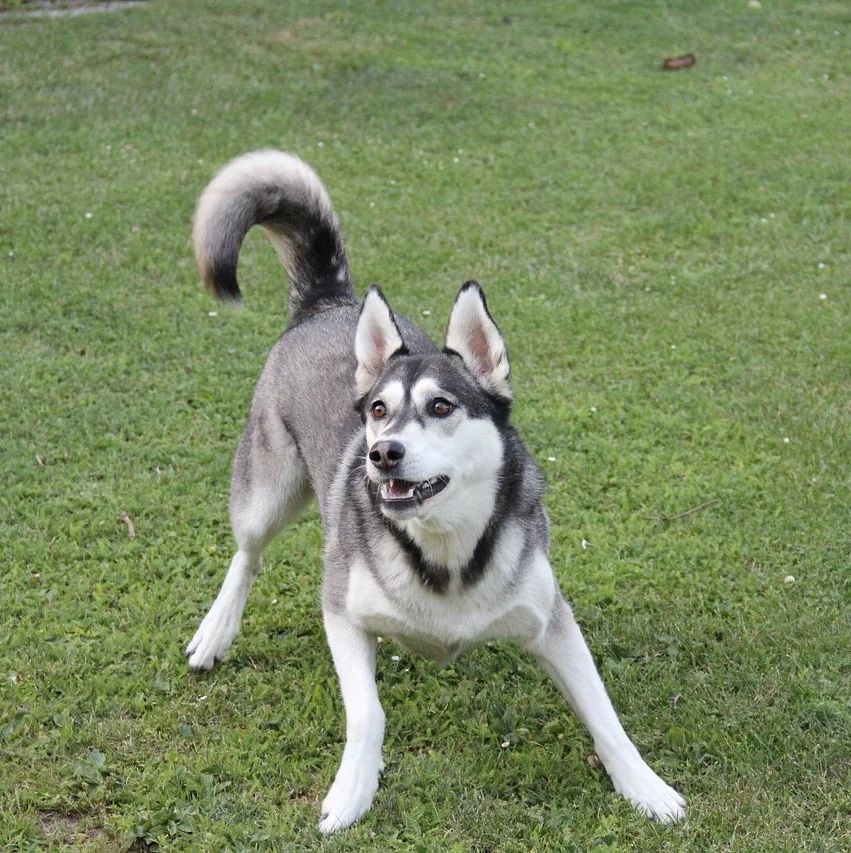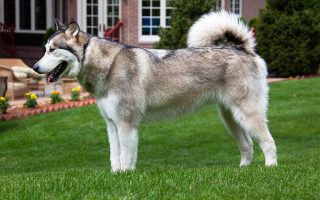Known for his elegant robustness and high IQ, the Belgian Malinois is an excellent representation of the herding dog breed.
It is a rugged and robust dog with a natural inclination to always be in motion. Thus, these dogs make a lovely addition to your family and household.
At first glance, it is possible to confuse this breed with a German shepherd. But once you look closely, you will find that it has some distinct features.
For instance, the Belgian Malinois has a slightly different head shape and is relatively compact compared to the German shepherd.
In addition the Belgian Malinois has an athletic frame as they have a muscular and lean body type.
But, when do Belgian Malinois stop growing?
[wpsm_toplist]
When Do The Belgian Malinois Stop Growing?

Among the most popular questions from dog parents is ‘when do the Belgian Malinois stop growing?’
Generally, the Belgian Malinois become full adult size between 10-11 months but may continue to increase in size until they reach 19 months.
Smaller dogs of the breed reach their full height size first compared to larger dogs of the breed.
As a result, you will find the female dogs will stop growing a few months earlier than their male counterparts.
However, depending on their genes, diet, exercise, and other lifestyle features, they can continue growing and add a few extra pounds until they reach three years.
The breed attains maturity by the time they are between 12-24 months. They have a regular behavioral pattern at this age and will still enjoy their time with their parents.
It is essential to ensure they have proper nutritional habits and plenty of exercises to maintain proper health.
One way to keep track of their growth is through a weight chart. Such charts aid in estimating the height and weight of your Belgian Malinois in relation to their age.
As a result, this chart can come in handy during their growth and developing stages.
While observing their weight chart, it is essential to note that there is no reason for concern if your dog’s weight does not match what is on the chart.
But, if his weight is drastically different, whether higher or lower than that given on the chart, it is crucial to take him for a medical evaluation as it could be a sign of a health problem.
How Big Do Belgian Malinois Get?

Similar to other dog breeds, Belgian Malinois have different features regardless of their gender.
For instance, the male Belgian Malinois are more adventurous and playful than their female counterparts.
On the other hand, female Belgian Malinois are smaller, more receptive, easier to handle, and more prone to stay close to their owners.
When it comes to their size, male Belgian Malinois tend to be bigger and are a bit taller than their female counterparts.
They are also more muscular due to their increased testosterone, which is hard to notice through their thick fur.
Generally, male Belgian Malinois have an average weight of 60-80 pounds and an average height of 24-26 inches from their shoulders down.
At three months, the male dogs of this breed should weigh between 23-27 pounds at three months and 43-52 pounds at six months.
When they reach one year, their weight should be between 59-70 pounds.
On the other hand, female Belgian Malinois are a few inches shorter than their male counterparts.
Female Belgian Malinois have an average height of about 22-24 inches and an average weight of 40-60 pounds.
By three months, their weight should be between 17-25lbs, while at six months, they are likely to weigh 32-46 pounds.
Additionally, they weigh 42-63 pounds by the time they are one year old.
There are three main ways to check the weight of your Belgian Malinois. They include using a scale, through a visual test, or a rib-test.
Generally, you should be able to see your dog’s waist, making this the visual examination.
If you cannot see it, then your dog has excess weight.
The rib test involves placing your hands down your dog’s back with your thumbs inverted towards the spine.
You should feel the ribs if the dog has a healthy weight range.
If you cannot feel them, it means that the dog has some excess weight.
Is A Belgian Malinois Considered A Large Breed?

Generally, Belgian Malinois is a medium-sized dog that do not need a large space.
But, they are an agile and alert breed with plenty of energy and demanding exercise needs, meaning they actually need a bit of space.
Thus, although they could live in an apartment building or small living spaces, they tend to survive better in larger homes with a decent-sized or ample yard space.
Since they are athletic, the more space they have, the better. Besides, it is best for everyone if they have sufficient space to run around.
However, they can live in smaller homes, provided they are often engaged in physically and mentally stimulating activities.
Owners have to furnish them plenty of attention to ensure they are entertained, busy, and occupied for the most part.
The same goes for those that live in larger homes.
It is also worth noting that many dog experts believe that the Belgian Malinois is part of the larger dog breed size as their average weight is in the 61-100lbs range.
Conclusion
Generally lean, muscular, and athletic, Belgian Malinois are not the biggest dogs available on the market.
However, they do require plenty of space due to their exercise and high energy needs.
Being a herding dog breed, these dogs need to be kept busy by giving them tasks to complete and involving them in family activities.
Now that you have the answer to ‘when do Belgian Malinois stop growing,’ you can actively take steps to guarantee their wellbeing.
If you want further information about Belgian Malinois, it is advisable to consult your local vet.
It is also crucial to note that these dogs are brilliant, meaning they can be quite destructive if left on their own.
Thus, this particular breed is perfect for experienced dog owners as it can be quite a challenge to keep up with and take care of them.







